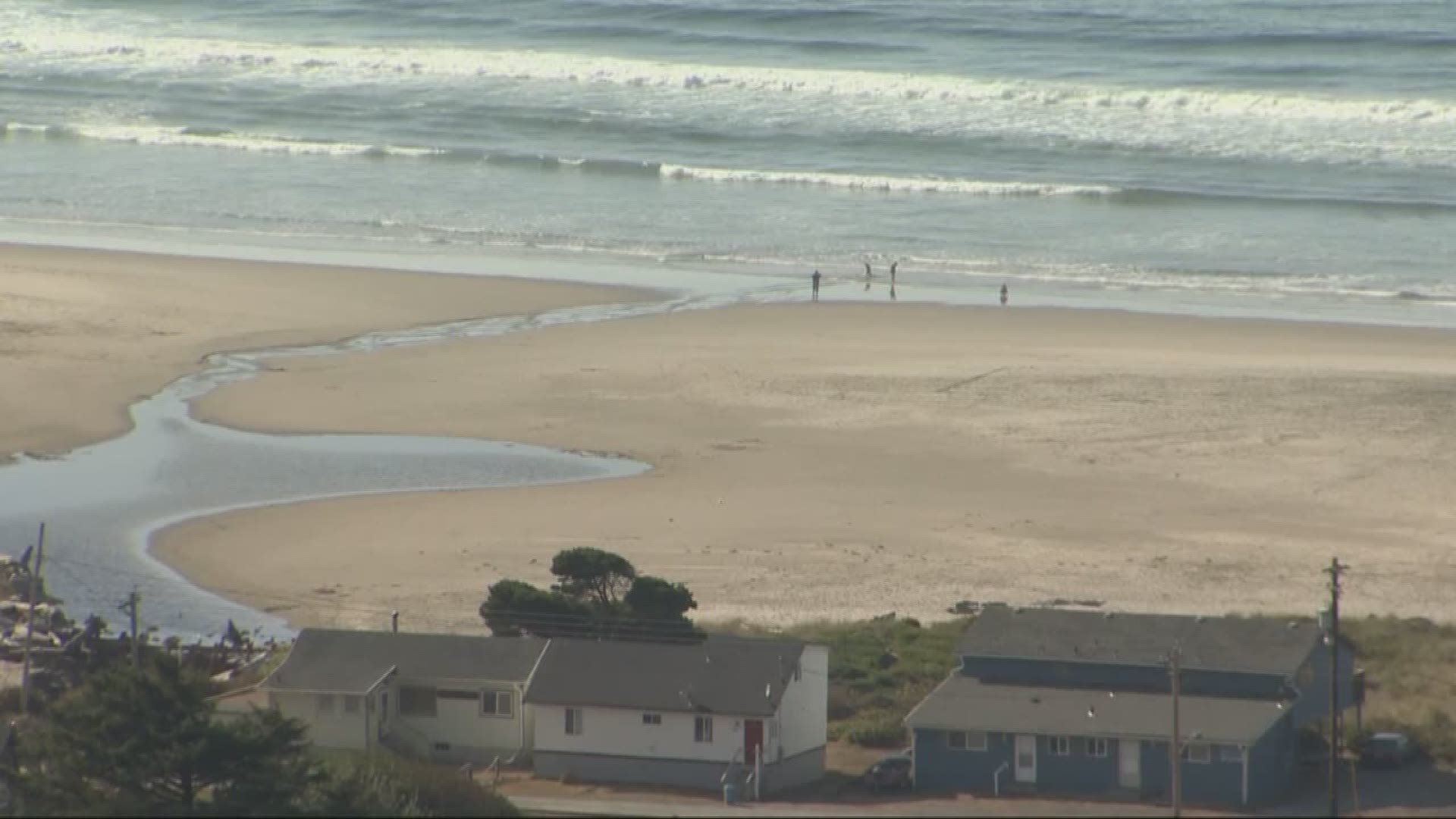SALEM, Ore. — A group of scientists raised the alarm in Salem on Tuesday.
They expressed concern about HB 3309, a new law that prioritizes development over the lives of Oregonians. The law overturns a ban that kept schools, hospitals, and police and fire stations from being built in tsunami zones.
Scientists agree a magnitude 9.0 earthquake and tsunami, much like what happened off the coast of Japan back in 2011, will some day happen off our shores as well.
A wave some 20 to 100 feet tall will crash into our coastal communities in the event of a major Cascadia Subduction Zone earthquake. Those in the tsunami zone will have a mere 15-20 minutes to get to higher ground. Those that can't will likely drown.
"We have ... essentially turn-of-the-century cities built on this time bomb and now we have a big problem," Chris Goldfinger, a marine geologist at Oregon State University, said.
Goldfinger was one of several members of the science community who spoke about their frustration with HB 3309 in front of the Oregon Seismic Safety Policy Advisory Commission on Tuesday.
In 1995, the state put a moratorium on constructing critical buildings, like schools and hospitals, in tsunami inundation zones. HB 3309, recently passed into law, removes that moratorium.
So how did this law pass?
It was actually an added amendment to a bill about surface mining. Many lawmakers and scientists said they were not even aware of the amendment. Some believe the bill's supporters intentionally kept it under the radar.
"This is such a flagrant violation to me for the way we should be doing business in the state," Jay Wilson, resilience coordinator for Clackamas County, said. "For something so critical ... no one was allowed to come in and testify to this."
Goldfinger, a leading expert on the Cascadia Subduction Zone, said he was surprised the bill passed.
"I was dumbfounded," he said. "After spending decades to get the science right ... now when it collides with society ... I was dumbfounded to see us take a giant step backwards."
Coastal representative David Gomberg led the effort to change the rules.
"I would describe the bill as a very important first step in making practical changes to address a significant problem," he said.
Gomberg argued science and engineering have changed a lot in the past two decades and will continue to change. He said not allowing tsunami-resilient buildings in the tsunami inundation zone could potentially be an economic loss.
"We don't know how the science and engineering is going to change in the coming years and whether we can build structures that are designed to withstand this kind of impact," he said.
Gomberg objected to claims that he tried to slide the amendment in without anyone noticing.
"There was adequate notice and plenty of discussion and this should not have been a surprise to people who were paying attention," he said.
There's no question people are paying attention now, and will be paying close attention, some say, until the law is changed.
Only one Oregon state senator voted against the bill. That senator was Brian Boquist, the Republican senator who recently made headlines over statements he made that many considered threatening.
On this bill, Boquist was forceful in his opposition. He wrote that passing it shows the state of Oregon does not care about the lives of its citizens.

